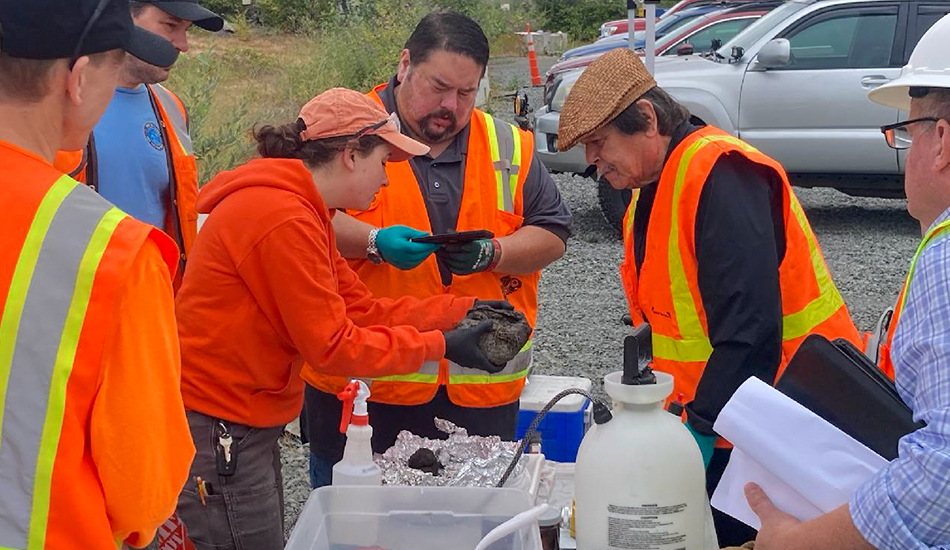By Molly Bryant, Puyallup Tribal News
For weeks, the Historic Preservation Department has been hard at work digging at an archaeology site situated near the Port of Tacoma. According to oral tradition, the site was once known as a Puyallup Warrior village.
Recently, archaeologists discovered an item that has the potential to be a historical artifact. It is a small piece of cloth that may be a part of a blanket, however, adequate testing will be necessary to identify the item accurately.
Tribal Council Chairman Bill Sterud recently got a first-hand look at the site. A lover of archaeology and history himself, he was able to participate in the dig and screen some of the dirt for testing.
“Archaeological findings have always been exciting and significant to me as I love history,” he said. “So, being able to go out and sift through the dirt was a rewarding experience. The findings are of great significance to our history and culture and will pay homage to our ancestors.”
Brandon Reynon, director of the Historic Preservation Department, said the site was originally a standing ground for the Warriors where they could defend the spuyaləpabš people and their main village site. He explained that they were able to cut off invaders at the pass, which allowed time for elders and women to run into the trees to hide or gather weapons needed to battle.
“This was just a really cool opportunity for him and myself to stand where we know our ancestors stood,” Reynon said.
Part of the Historic Preservation Department’s mission statement is to “preserve, protect, and share the history of the Puyallup Tribe of Indians.” The department uses a database that identifies the high probability of village sites and where they are located. For this village site, researchers relied on oral tradition for clues.
“One of the great benefits of working for our Historic Preservation Department is we have a unique opportunity to work with the ancestors, and we feel the connection as we are preserving their history and retelling their story,” Reynon said. “That’s something that we get to do on a daily basis, whether it be through the archives or whether it be through these archaeology digs.”
A full excavation of the site will be extensive as the land sits on 10 acres. Reynon explained there are three phases to coring, the process his team uses to analyze and obtain data. A large machine called a Sonicore drill drives a metal pipe about six inches in diameter. That pole then vibrates and pierces into the ground. As it is pushed downward, it collects dirt. Once the determined depth is reached, the drill operators bring the pipe back to the surface, and, with it, the soil to analyze for artifacts.
Currently, the Historic Preservation Department has an Archaeology team of three workers, including two Tribal members, Brandon Reynon and Jennifer Keating. They are actively conducting several digs on and around our reservation.
Photo courtesy of Brandon Reynon





